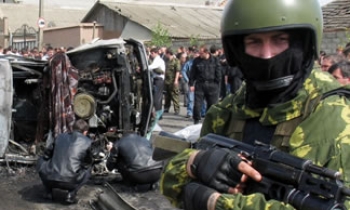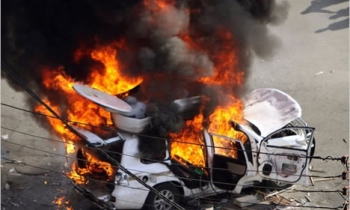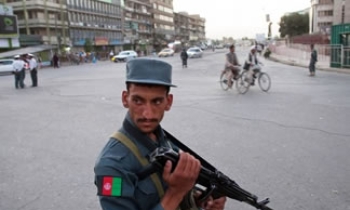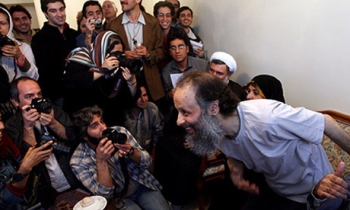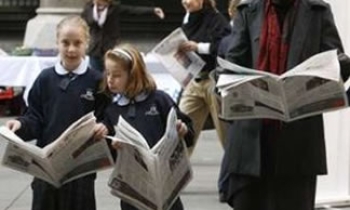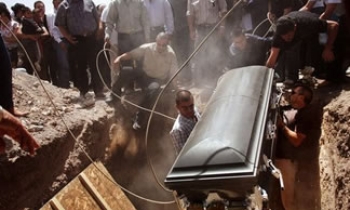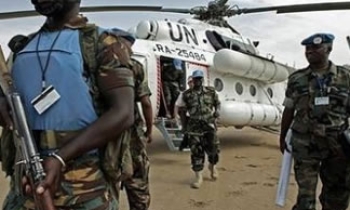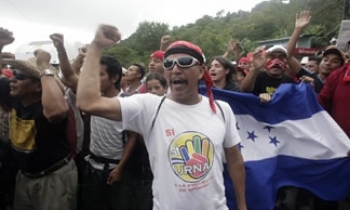Twenty members of the International Freedom of Expression eXchange (IFEX) have set up a Burma Action Group to support protesters and journalists in their struggle against the recent military crackdown in the country.
Participants at the IFEX general meeting last week in Montevideo, led by Soe Myint of Burmese exile-run news agency Mizzima News, called for a factfinding mission to the notoriously closed regime, and practical ways to get news out to the international community.
Myint said there is a real need for large amounts of technology equipment that can be easily concealed (like hidden cameras and walkie-talkies), simply understood, and easily set up and taken down. "We need tools to overcome the government crackdown," said Myint. "It is time for us to prepare for the worst."
A Japanese photojournalist, Kenji Nagai from the Tokyo-based APF News, was among 200 civilians reported killed during the recent protests in the country.
The International Federation of Journalists (IFJ) has expressed concern over the safety of another journalist, a German photographer who is reportedly also a victim of a shooting by security forces. “Once again we see that it is journalists who are in the front line facing violence from unrestrained security forces dealing with peaceful protest,†said a spokesperson of IFJ. “It is essential that the Burmese authorities lower the temperature and allow journalists and peaceful demonstrators to exercise their right to work safely and protest peacefully.â€
Burmese authorities have, however, released three journalists who had been held for several days: Kyaw Ze Yar Tun from Burma-based the Voice journal, Nay Lin Aung from the Seven Day News journal, also based in Burma, and Min Zin from Tokyo Shimbun. Win Ko Ko Lat of Rangoon-based journal Weekly Eleven, radio producer Min Htin Ko Ko Gyi, and photojournalist Win Saing are still being held by state authorities. According to BBC, a hotel in which foreign journalists have been staying in Rangoon has been surrounded and ransacked.

The police has been arresting people using photos and videos of the demonstrations, including footage taken by plainclothes police, say Mizzima News, Reporters sans Frontières (RSF), and local news reports. The information ministry, the official news agency, and the security forces have reportedly been told to work together to identify the "citizen journalists."
In line with the vicious crackdown against citizens, religious leaders and pro-democracy activists, the junta in Burma has arrested journalists, restricted telecommunications facilities, shut down the Internet, and denied foreign media representatives entry into the country. However, several journalists have been able to send out images and videos of the protests as well as footage of the government’s crackdown on demonstrators over the Internet.
In the past week, Burma has allowed some access to the Internet, but restricted it to Burmese websites and email messages with Burmese addresses ending in .mm, RSF reported. But Mizzima News has warned that open Internet connections can help the junta pinpoint where the signals are coming from and target critics.
Another concerning issue is that Burmese junta has ordered Rangoon-based journals and newspapers to publish a declaration denouncing the protests. According to the Burma Media Association (BMA), the junta's director of the Press Scrutiny and Registration Division, Major Tint Swe, instructed all Burmese print media at a meeting last Sunday to publish a declaration stating they were not interested in the ongoing protest.

RSF has reported that many privately-owned magazines have not yet reappeared on newsstands. Some are refusing to publish propaganda while others are waiting for the military censors to approve their next issue. Two privately run Burmese language news groups, Pyi Myanmar and Eleven Media, have stopped publication in protest against government pressure to publish propaganda pieces about the protests in their pages. State-run publications and television stations, meanwhile, have run propaganda pieces produced by state officials sympathetic to the government’s heavy-handed and deadly response to the recent protests.
Prior to these recent events, the Burmese regime was already known to be unaccommodating and oppressive to the practice of free expression. These developments only serve to further worsen a media environment that already consistently ranks among the world's worst.
Military-run Burma, known officially as Myanmar, remains one of the most repressive places for journalists, trailing only North Korea on CPJ’s 10 Most Censored Countries list. The junta, which calls itself the State Peace and Development Council (SPDC), has exerted Orwellian control over all media, harassing or jailing journalists who stray from the official line in their reporting or who help foreign correspondents with critical reporting. Journalists who have been covering the street protests, which started in August because of a sudden nine-fold increase in fuel prices, have experienced censorship, violence and detention by government authorities.

